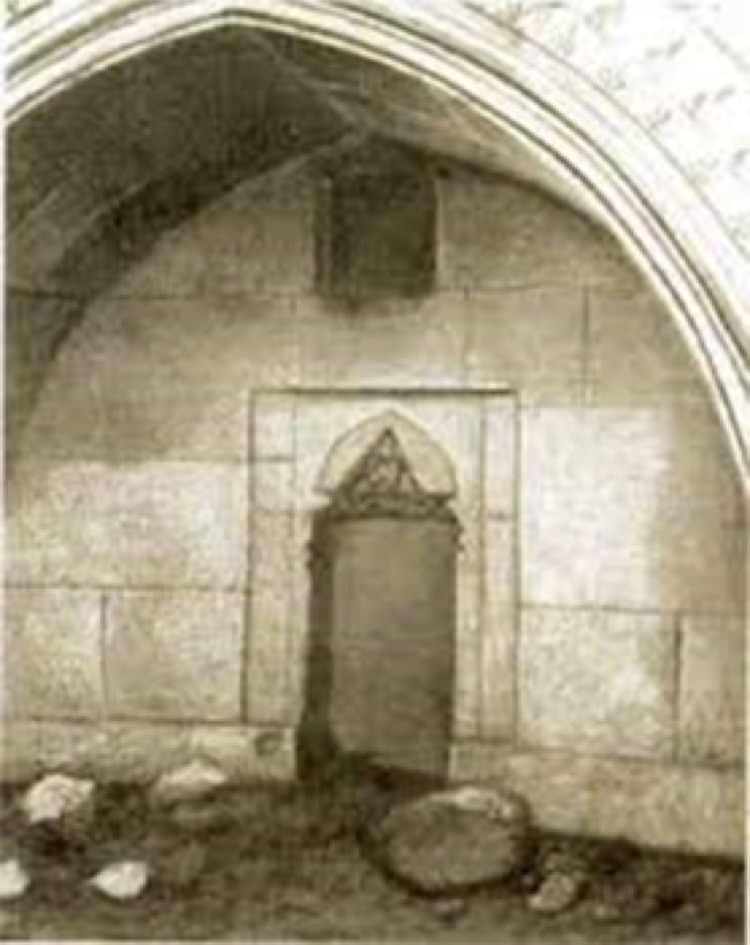The district of Zangilan is the administrative district of the Republic of Azerbaijan. It is located in the south-eastern part of the Minor Caucasus on the left bank of the Araxes. It neighbors with the Republic of Armenia in the west and the north-west and with the Islamic Republic of Iran in the south. Its area is 710 km2 ; the population is 45,200 (01.01.2020). The central town is the city of Zangilan. The region was occupied by the Armenian army on October 29, 1993. During September 27-November 9, 2020 Zangilan region was liberated from occupation.
The district covers the followings: Zangilan city, Uzumchuler, Beshdeli, Genlik, Kechikli, Malatkeshin, Sarighishlag and Minjivan settlements and villages of Birinji Aghali, Ikinji Aghali, Uchunju Aghali, Birinji Alibayli, Khumarli, Saril; Ikinji Alibayli, Zanghilan kend, Icheri Mushlan, Ghirat Mushlan, Malikli, Udgun, Hajalli, Hekeri station, Khurama, Muganli, Sherifan, Isghenderbayli, Aghakishiler, Agbis, Bartaz, Bartaz station, Gargulu, Mammadbayli, Babayli, Jahanghirbayli, Tatar, Tiri, Turabad, Valigulubayli, Ordekli, Garadere, Garagoz, Rezdere, Kollughishlag, Shatariz, Shayifli, Ashaghi Gheyeli, Garagol, Najaflar, Taghli, Yusifler, Janbar, Aghkend, Dereli, Gunghishlag, Gazanchi, Pirveys, Yukhari Cheyeli, Chopedere, Baharli, Dellekli, Sobu, Boyuk Ghiletagh, Aladin, Dere Ghiletagh, Mirhasanli, Muganli, Shamli, Venetli, Sherikan, Burunlu, Seyidler, Shafibayli, Meshediismayilli, Vejneli, Aghbend, Amirkhanli, Orta Yemezli, Ashaghi Yemezli, Yukhari Yemezli, Guyu Dere Kheshtab, Saralli Kheshtab, Zerneli, Havali, Yenikend, Rebend.
The following educational and social institutions were active before the occupation: 66 secondary schools, 4 sever-year musical schools, the Museum of Local History and Geography, the Museum of Stone Monuments and the Museum of the Friendship of Peoples, 1 central library, 1 children library, 65 village libraries, the central regional hospital, 4 village hospitals, 46 maternity services centers, 6 out-patient medical treatment institutions, Minjivan railway hospital and others. There were also the mirodor (14th century), the turbeh (1304-1305) and the tombs (12th - 14th centuries) etc.
“Imam Huseyn” Mosque
“Imam Huseyn” Mosque situated in Zangilan city is attributed to the 17th-18th centuries. The mosque is supposed to be built in the period of the Safavids. Its area dimensions were 12x20 meters. There were a sanctuary and a niche inside the mosque. Mainly the local limestone was used in construction. The walls are not covered. The vaulted door of the mosque was opened to the east and bore an inscription.
“Imam Huseyn” Mosque was demolished by the Armenian vandals during the occupation period.
On October 20, 2020 Zangilan city was liberated from occupation.
Mammadbeyli Tomb
The tomb located in Mammadbeyli village of Zangilan consists of the octagonal prism covered with pyramidal dome. The door of the tomb is 1.8 meters in height. There is an underground vault there. Mammadbeyli tomb resembles the tower shaped tombs of Azerbaijan. The floor is covered with well-polished stones. There is an inscription on the entrance door of the tomb. The inscription bears verses from the Koran in four lines. The two lines make clear that the tomb was built in honour of Mahammad al-Haj’s son Yahya in Hegira 704, AD 1305.
The architect and bricklayer of the tomb is Ali Majdaddin.
On October 20, 2020 the village was liberated from occupation.
Sharifan Tomb
The remnants of the lower part or rather, the vault of an ancient tomb were discovered on the right bank of the river Hekeri in Sharifan village of Zangilan region. The vault with projections is square-shaped (5.4x5.4 m). The vault has a shallow rectangular sanctuary (mehrab) niche in the south wall. Its upper part is decorated with stalactites and its sides – with delicate pillars.
The projections of the vault were covered with arches and central part – with a spherical dome. Facing the walls and arches with good-hewn and polished stone, carving the decorative strip on the sanctuary niche and the archivolt of the arch, etc. give grounds to tell that this vault was formerly a part of the highly artistic tower-shaped tomb. The Sharifan Tomb is considered to be a monument built at the turn of the 13th-14th centuries.
On October 20, 2020 the vilage was liberated from occupation.
Immovable historical and cultural monuments of state importance
ARCHITECTURAL MONUMENTS
Name of the monument |
Construction date |
Location |
Round tower |
|
Hajialilar village |
Eight-pointed mausoleum |
1304-1305 |
Mammadbayli village |
Maiden fortress |
12th c. |
Amirkhanli village |
Mausoleum |
14th c. |
Yenikand village |
Mausoleum |
13th c. |
Sharafan village |
Immovable historical and cultural monuments of local importance
ARCHITECTURAL MONUMENTS
Name of the monument |
Construction date |
Location |
Mosque |
19th c. |
Zangilan village |
Mosque |
19th c. |
Malatkeshin village |
Mosque |
19th c. |
Girag Mushlan village |
Bridge |
19th c. |
Hajialilar village |
Round tower |
13th-14th cc. |
Hajialilar village |
Mosque |
19th c. |
Mushlan village |
ARCHAEOLOGICAL MONUMENTS
Name of the monument |
Construction date |
Location |
Shahri Sharafan settlement |
13th-14th cc. |
Sharifan village |
Agja Ashig settlement |
Middle Ages |
Havali village |
Giz tower |
Middle Ages |
Havali village |
Gasr tower |
Middle Ages |
Where the Okhchuchay river merges with Araz |


